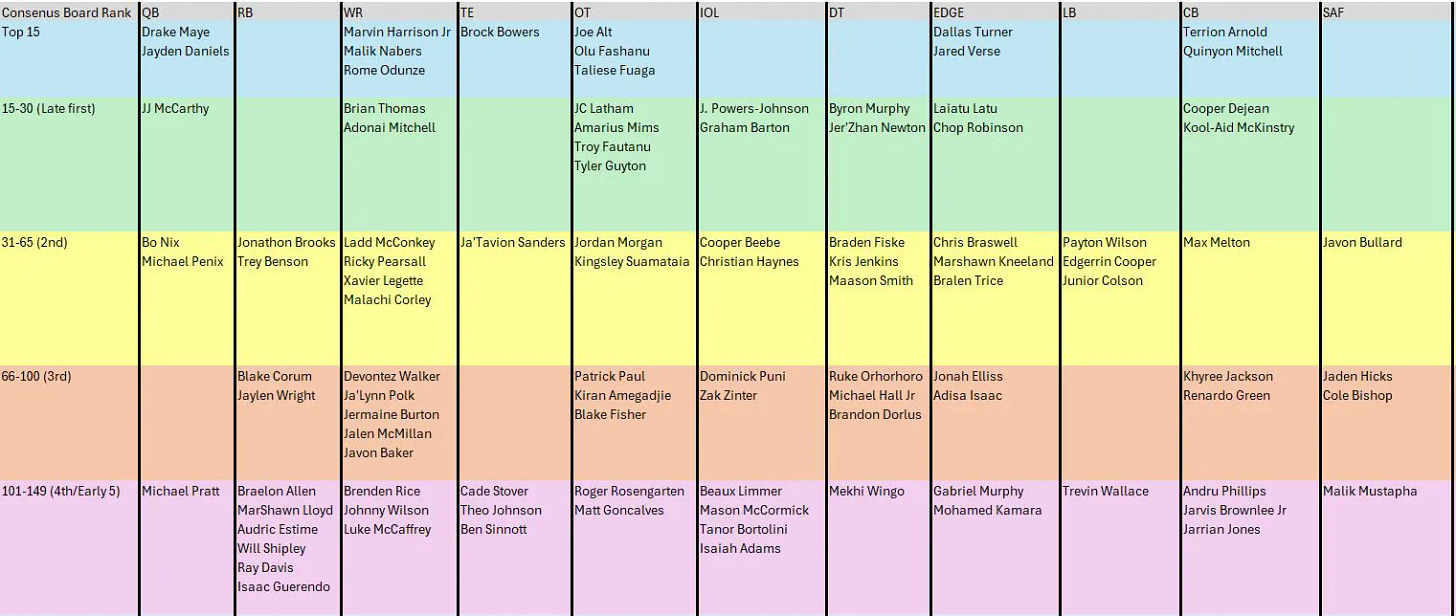Putting together draft roadmap for Packers based on historical hit rates
It's not enough to know how to evaluate players. Teams have to game out how they think the draft will fall to find the places where they can attack based on their evals.
One of the lessons the NFL draft teaches us is there are certain positions where scouting isn’t enough. Teams just aren’t good at finding the right guys, at ordering them, and deciding who belongs in the first round versus the second, third, or fourth.
The Green Bay Packers believe in their own process for the draft, and their history bears that out. They’re terrific at hitting on Day 2 receivers, Day 3 offensive linemen, and, apparently, finding quarterbacks when they don’t need them.
But that doesn’t mean they can’t learn from league history too. They know who they like, now where are those players most likely to go and how does that impact their strategy coming up in two weeks?
Our friends over at Acme Packing Company compiled a horizontal big board based on the Packers’ draft types. There are clear lines of demarcation at certain positions and this board is all the players who have not disqualified themselves, not necessarily everyone who checks every box. That is true partially because we don’t even know what’s in those boxes, just the history that points to certain qualifications.
And because we will be referencing it often, here are the Pro Football Focus studies on historical hit rates by position:
Knowing where teams find success across the league, we can assess the degree to which the Packers can have confidence in their types. It also sets up the strategy part of the draft: finding value in each round comes with different upside and discreet risk. Teams tend not to say, “Hey this guy is a safety, so we should feel less confident in our evaluation of him,” but history tells us that’s the correct impulse.
It’s also worth pointing out that while the Packers have done some reaching in the first round based on the consensus board, we will talk about the next tier when we get to picks 41 and 58 anyway, so consider the same players at similar positions.
With all that said, here’s what history says the Packers’ options will actually look like at their current draft positions.
Keep reading with a 7-day free trial
Subscribe to The Leap to keep reading this post and get 7 days of free access to the full post archives.



